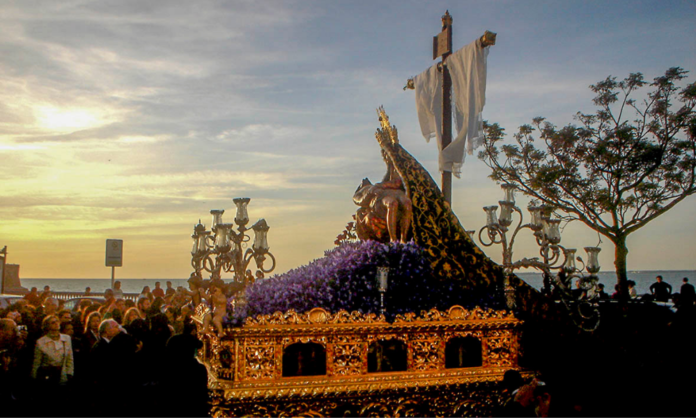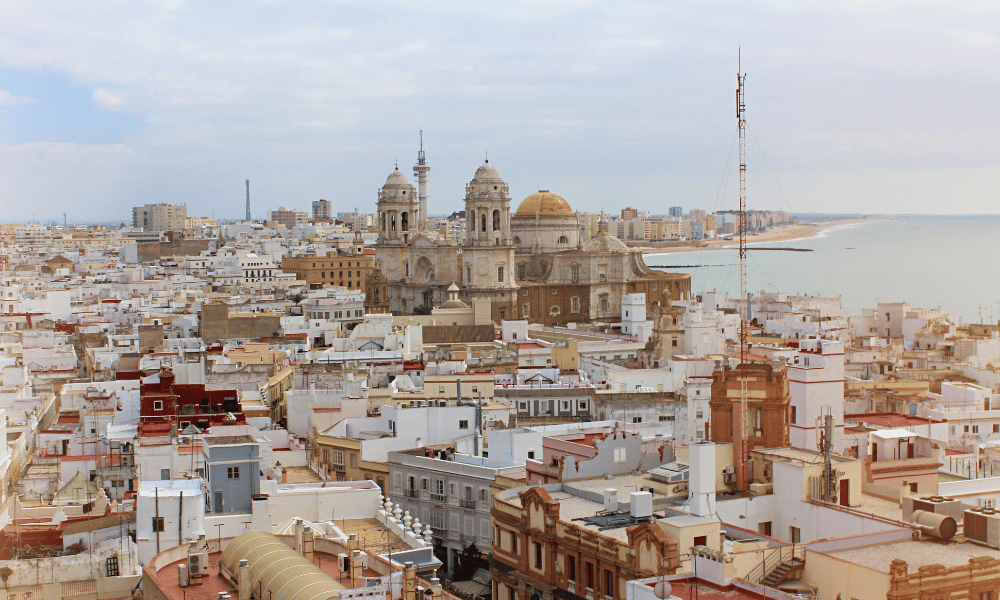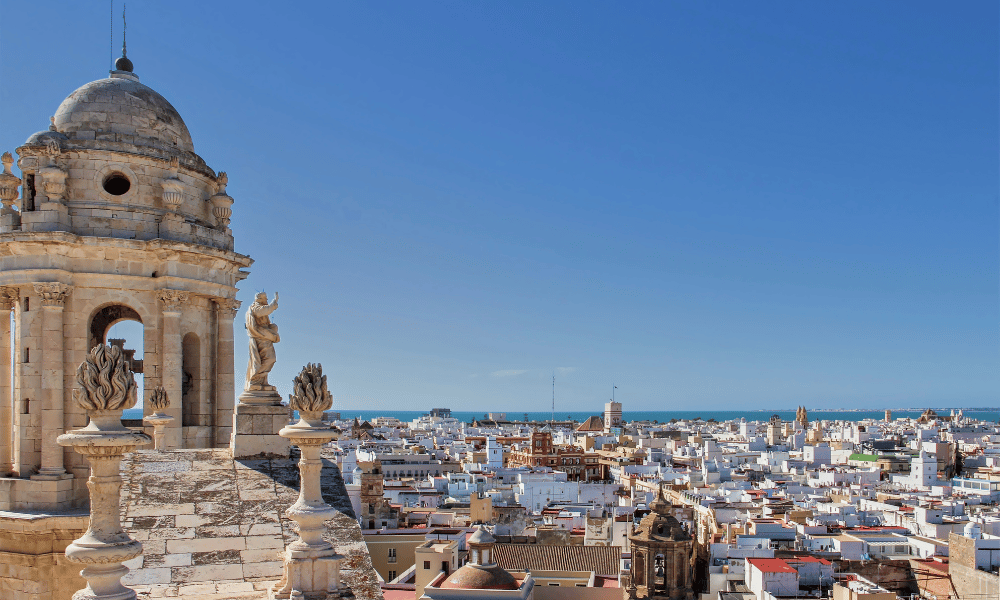
In the ten days between the Friday of Sorrows (the Friday before Good Friday) and Easter Sunday, 29 fraternities and a section of penitents pass through the streets of Cadiz. 52 processional floats and more than 10,000 people participate in the processions. The sacred images and the floats themselves are veritable gems of local heritage, and some are more than five hundred years old.
Holy Week in Cadiz is an Andalusian event and so shares features that are common to the rest of the region: colour, music, the passion unique to the region are all clearly visible in the Holy Week of Cadiz.
But there are other features that make Holy Week in Cadiz very different and very unique.
To start with, there is the geographical location of Cadiz, a peninsula surrounded by the sea on four sides except for the isthmus that connects it to San Fernando (another island) and the two points that connect it to Puerto Real. It’s difficult to walk for more than 10 minutes in the streets in the city centre without bumping into the sea, in the form of a beach or a balcony. The routes of Holy Week are no exception and many brotherhoods and fraternities walk next to the sea on their penitential processions towards the Cathedral. The times of many processions often coincide with the sunset, which makes for some unforgettable images that cannot be seen in other cities.

The city of Cadiz captivates everyone who visits her: its shape, small size, layout, mixture of architectural styles formed by over 3,000 years of history make the city full of treasures waiting to be discovered on every corner, every plaza, while every street has its own story to tell and Holy Week takes the visitor to each and every one of them.
Most of the city’s churches can be found in the old quarter, the part of Cadiz with the greatest value for the tourist, a small area that easily covered on foot; flat and full of hotels and unique places to stay.
Holy Week is an ideal occasion to discover Cadiz, a three thousand year old city that puts away the carnival disguises when Spring comes and dresses up in processional robes and incense.

The Images
Besides the city itself, Holy Week in Cadiz is special for its impressive and little known collection of images. The reason for this rich artistic heritage is that in the 17th, 18th and 19th centuries the city was the main port between Spain and the Americas, which made Cadiz a rich and prosperous place, where merchants, traders and artists from all over Europe would embark on their journey to the New World. Many of them left their mark here with beautiful images.
The Style
Although the Holy Week of Cadiz has clearly been influenced by Seville, the mother of all Holy Weeks throughout Andalusia, it has features that make it different from Easter in Seville and other similar events in the region. The most important one is the way in which the processional floats are carried.
To understand this we need to consider that in Seville and practically everywhere else in Andalusia (with the exception of Malaga), the floats are carried a costal, in other words, carried on the neck with poles that cross from one side of the float to the other called trabajaderas. In Cadiz, the same poles go from the front of the float to the back and the bearers carry the float on their shoulders. This arrangement makes the style of float a very different one, with movements that are wider and make the floats rock from side to side instead of moving more naturally at walking pace as they do in Seville.
The processional floats in Cadiz have other unique features such as the manigueta and horquilla (staffs), symbols of the identity of Holy Week in Cadiz.
Alongside the bearers who go underneath the float, four to eight penitents also walk at each corner of the float, carrying the horquillas, which used to be employed to support the float when it stopped and which are now used to mark the rhythm and pace of the float. The sound of the metal tips of the horquillas striking the ground is typical of Cadiz.
The Sounds of Cadiz in Holy Week
Andalusia in Holy Week is meaningless without music. Music is part of the regional identity and flamenco, one of the symbols of Andalusia is very much present in Holy Week. Historians place the origins of flamenco in the triangle formed by Seville, Jerez and Cadiz and the form of flamenco for Holy Week has a name: the saeta.
These are short improvised compositions sung in the street or from balconies. A saeta is a deeply felt and sincere prayer that comes from the soul and expresses the devotion and love felt for Jesus and the Virgin in the form of a song. Whenever a saetera or saetero sings, everyone listens.
Santa María is the number one flamenco district of Cadiz and the return of the image of the Nazareno to its church in the early hours of Good Friday, when the sun is about to rise and saetas ring out, dedicated to the Regidor Perpetuo and his mother, Nuestra Señora de los Dolores is a truly unique experience.
The Holy Week of Cadiz is expected to receive the Declaration of Festival of National Interest for Tourism in the next few weeks, which will surely do a lot to raise awareness of a festival and form of cultural expression that is deeply rooted in the region, but which has been overshadowed by other festivals in the city and other Holy Weeks in the region. Perhaps now the reader will understand the reason for the title of this article: a Holy Week that is beautiful, authentic and very different, but which is waiting to be discovered.



